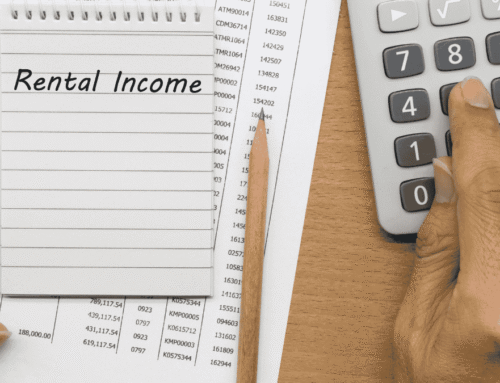Best Turnkey Real Estate Markets in 2025: Cash Flow, Risk & Landlord Laws (Ranked)
Best Turnkey Markets in 2025 — Why Market Choice Matters
Updated:
I’ve bought 120+ rental properties across the U.S. over the last decade (as a non-U.S. investor), and a lot of those have been turnkey rental properties. I’ve had good experiences and bad, and one of the biggest drivers of long-term success for me hasn’t been a “perfect” pro forma, it’s been market selection. When I started out, I chased “cheap” and “high cash flow.” Eventually, a lot of those deals fell apart and, in a few cases, cost me more than they made. In this guide, I’ll show you what I learned about picking turnkey markets, and where investors are most likely to find realistic long-term growth and cash-flow success.
I’ll rank markets using a simple, transparent framework: rent-to-price signals, property tax & insurance drag, landlord law, lease-up/vacancy trends, and DSCR feasibility with realistic PITIA. No hype lists, just what actually matters if you want to own an asset that grows your wealth over the long term.
Note: City rankings are a starting point. Always verify taxes, insurance, licensing/STR rules, and neighborhood comps at the hyper-local neighborhood level before you commit.
JOIN MY VIP PRIORITY INVESTOR LIST
Get the Best Turnkey Investment Properties in Your Inbox Every WeekYES! ADD ME TO THE PRIORITY INVESTOR LIST
How I Ranked the Markets
There are 1,000 ways to “rank” a real estate market. For me, I want to own assets in markets that align with my personal investment strategy. For clarity, here’s what I’m personally looking for:
Cash Flow: Let me be clear, I want sufficient cash flow to comfortably cover the cost of ownership, but I’m not buying a house for the $300/month check. I don’t intend to touch my cash flow for at least 5 years (maybe 10). There will be repairs, vacancy, CapEx reserves, and I expect to spend or save every dollar the property generates for some time. I’m looking to accumulate assets that pay for themselves, not pay for lunch. I’ll start taking cash flow eventually, but for now I want a solid, self-funding portfolio.
Equity Growth: I’m not trying to set the world on fire, I’ve been burned chasing the “hottest” market. I’ll trade potential short-term upside for long-term stability. At the metro level, I want:
- Housing Affordability: <30% of median income on rent/housing costs.
- Jobs: A stable/growing jobs market.
- Demographics: A stable/growing population.
- Economy: A sable/growing metro/city-level economy.
Then, I target neighborhoods within 10–30 minutes of major employment centers, and I look for population growth and positive real estate market indicators at the neighborhood (not just city/metro) level. If those conditions are met, I underwrite for ~+5% p.a. appreciation, no more, no less.
Financing: If I’m buying value-add, I’ll use private money for purchase/rehab, then a DSCR cash-out refinance. That’s rare now. After too many contractor issues, I have one team in one market I trust to deliver on cost/time/quality, so the stars really have to align. If a potential deal comes along, I’ll pass if my specific contractor isn’t available. Most of the time I buy turnkey rentals that fit DSCR loan parameters.
With that in mind, these are the criteria I used to score these turnkey markets. Each input affects cash flow, DSCR approval odds, long-term growth potential, or operational risk. In my experience, this is what makes or breaks long-term success.
- Rent-to-Price Signal: Median rent ÷ median price as a fast cash-flow screen (sanity check, not gospel).
- Tax & Insurance Drag: Typical investor property tax rate and insurance pressure on PITIA; higher drag = tougher to qualify for DSCR financing.
- Landlord Law: Eviction timeline, licensing complexity, short term rental (STR) stance; simpler = less friction and faster resets.
- Lease-Up & Vacancy: Time-to-rent indicators and demand resilience (jobs, population, inventory).
- DSCR Feasibility: Likelihood of ≥1.20–1.25× at prevailing DSCR rates with realistic expenses. This can be tough for turnkey properties due to the typically higher price point.
- Risk: There’s a big difference between affordable and cheap. Affordable means locals can afford to rent/buy. Cheap, on the other hand, often means rough neighbourhoods and a questionable tenant pool. Affordability is one of the most important metrics in my matrix. Cheap is not!
Reality check: These are a mix of city/metro-level and neighborhood-level signals. Always verify property-level taxes, insurance, HOA, licensing, and rent/value comps at the neighborhood level.
Top Turnkey Real Estate Markets (2025)
Before you dig into this list, I want to be crystal clear. There is no ‘perfect’ real estate market. In fact, in the majority of markets with affordable house prices and decent rent-to-price ratios, it’s street-by-street. In all of these markets there are some great neighbourhoods, and some really not so great ones. This is why a combination of objective data analytics and real-life local-market experience is essential. The data will only get you so far. You really need to build a local team with local experience who you can trust to guide you through the nuance at the neighbourhood level.
I’d also like to point out that I don’t know the ins and outs of every real estate market in the United States. There are good and bad deals in every market. This list is based on my personal experience and research.
| Rank | Market | Rent/Price Signal | Tax/Ins Headwind | Landlord Law Snapshot | Best For |
|---|---|---|---|---|---|
| 1 | Cleveland, OH | Solid rent-to-price | Low–moderate | Generally pro-landlord | Value + DSCR leverage |
| 2 | Kansas City, MO | Balanced yield/growth | Low–moderate | Landlord-friendly | Cash flow + realistic 5% p.a. appreciation |
| 3 | Memphis, TN | Strong cash-flow baseline | Low–moderate | Landlord-friendly | Cash flow, 1–4 units |
| 4 | Indianapolis, IN | Consistent ratios | Low–moderate | Landlord-friendly | Scalable SFR/duplex plays |
| 5 | Birmingham, AL | High gross yields | Low–moderate | Landlord-friendly | Yield-focused portfolios |
| 6 | San Antonio, TX | Stable demand | Moderate taxes | Landlord-friendly | Long holds, newer stock |
| 7 | Pittsburgh, PA | Decent yields | Low–moderate | Mixed by borough | Blue-collar stability |
Cleveland, OH — Cash-Flow Value with Manageable Overheads
Cleveland, OH — At a Glance
| Rent-to-Price (typical) | ≈0.85–1.00% |
|---|---|
| DSCR Feasibility @ 30-yr Fixed | ✓ at ≥1.20–1.25× on realistic PITIA |
| Tax/Insurance Drag | High tax – low insurance |
Guidance only; verify property-level taxes, insurance, licensing, and rent comps.
- Why it works: Affordable purchase prices and rents support yield; historically favorable rent-to-price ratios; strong medical/education anchors; steady renter demand. Metro growth has shown signs of stabilization after prior declines, with potential tailwinds if/when rates drift toward ~6%.
- Watch-outs: Performance is block-by-block (some east-side pockets are higher-variance); lead-safe/rental licensing in certain areas; verify post-sale taxes (investor rate) and budget a bit more for CapEx given older housing stock.
- Who it suits: Investors prioritizing value + DSCR leverage on 1–4 units or small multis with professional management.
Toolbox: Review my Cleveland market analysis. See current turnkey rentals in Cleveland. Stress-test DSCR and PITIA in the DSCR calculators and check the latest DSCR rates.
Kansas City, MO — Balanced Yield with Solid Fundamentals
Kansas City, MO — At a Glance
| Rent-to-Price (typical) | ≈0.95–1.00% |
|---|---|
| DSCR Feasibility @ 30-yr Fixed | ✓ at ≥1.20–1.25× on realistic PITIA |
| Tax/Insurance Drag | Low tax, moderate insurance (county-specific) |
Guidance only; verify property-level taxes, insurance, licensing, and rent comps.
- Why it works: Balanced rent-to-price ratios with inventory that often pencils for DSCR at today’s ranges. Diversified employers (logistics, healthcare, tech) support steady renter demand. Affordable purchase prices and improving trends in select east-side neighborhoods are boosting demand for single-family rentals. Lots of older homeowners with significant equity are selling and downsizing into more affordable single-family homes in the suburbs.
- Watch-outs: Taxes vary by county (e.g., Jackson vs. Clay/Platte); confirm rental licensing/inspection requirements where applicable. Underwrite rehab quality carefully—avoid “lipstick” turns that inflate pro formas. Some neighborhoods remain a no-go for me; keep a tight radius and verify comps/street views. I’m also watching the jobs mix, given the local public-sector footprint.
- Who it suits: Investors seeking dependable cash flow with moderate appreciation potential, using professional PM and straightforward DSCR financing. Kansas City has some great buy-and-hold neighbourhoods in my opinion.
Toolbox: Browse Kansas City turnkey rentals, then model fixed vs ARM and interest-only scenarios in the DSCR calculators. Check the latest DSCR rates before you lock in a deal.
Memphis, TN — Yield Potential with Tight Operations
Memphis, TN — At a Glance
| Rent-to-Price (typical) | ≈0.85–0.90% |
|---|---|
| DSCR Feasibility @ 30-yr Fixed | ✓ at ≥1.20–1.25× on realistic PITIA |
| Tax/Insurance Drag | Moderate (county-specific) |
Guidance only; verify property-level taxes, insurance, licensing, and rent comps.
- Why it works: Historically favorable rent-to-price ratios; deep renter pool supported by logistics/medical employers; wide selection of 1–4 unit inventory that often pencils for DSCR at today’s ranges.
- Watch-outs: Performance is block-by-block; crime can be a problem, verify rent and value comps, street views. Taxes/insurance can vary by area; older housing stock means budgeting for roofs/HVAC/plumbing. Underwrite rehab quality carefully and avoid “lipstick” turns. Heavy tenant vetting and high quality property management is required.
- Who it suits: Yield-focused investors comfortable with professional PM, hands-on asset reviews, and disciplined CapEx/reserves planning.
Toolbox: Start with my Turnkey Due Diligence Checklist, then model fixed vs ARM and interest-only scenarios in the DSCR calculators. Check the latest DSCR rates before you lock.
Indianapolis, IN — Scalable, Landlord-Friendly
Indianapolis, IN — At a Glance
| Rent-to-Price (typical) | ≈0.75–0.90% |
|---|---|
| DSCR Feasibility @ 30-yr Fixed | ✓ at ≥1.20–1.25× on realistic PITIA |
| Tax/Insurance Drag | Low (county-specific) |
Guidance only; verify property-level taxes, insurance, licensing, and rent comps.
- Why it works: Solid rent-to-price signal with steady demand; landlord-friendly state posture; inventory that tends to appraise and lease predictably, good fit for DSCR financing and portfolio scale.
- Watch-outs: Tax levels can vary by township; confirm any local rental licensing/inspection. Older properties need thorough inspections (foundations, sewer, electrical). In newer tracts, watch HOAs and lease restrictions. Higher maintenance reserves and heavy tenant vetting are required. Careful neighbourhood analysis is required. Avoid cheap (< $100,000) neighbourhoods.
- Who it suits: Investors seeking reasonable cash flow and the potential for long-term appreciation in the right neighbourhoods.
Toolbox: Use my due diligence checklist, then run PITIA/DSCR scenarios in the DSCR calculators. Review current DSCR rates and match prepay to your hold plan.
Birmingham, AL — High Gross Yields with Blue-Collar Demand
Birmingham, AL — At a Glance
| Rent-to-Price (typical) | ≈0.70–0.85% |
|---|---|
| DSCR Feasibility @ 30-yr Fixed | ✓ at ≥1.20–1.25× on realistic PITIA |
| Tax/Insurance Drag | Low (county-specific) |
Guidance only; verify property-level taxes, insurance, licensing, and rent comps.
- Why it works: Attractive rent-to-price ratios and a broad base of medical/industrial employers. Plenty of 1–4 unit inventory that can pencil for DSCR at today’s ranges. One of the most affordable housing markets in the U.S. Some good subsidized financing options in certain neighbourhoods.
- Watch-outs: Performance is neighborhood-specific, verify comps for rents and value. Older housing stock → budget for roofs/HVAC/plumbing; confirm local rental licensing where applicable. Well-renovated turnkey properties might require bigger down payments to qualify for financing.
- Who it suits: Long term buy and hold investors looking for stable cash flow and moderate house price appreciation.
Toolbox: Use the Turnkey Due Diligence Checklist, then model cash flow/DSCR in the DSCR calculators. Check current DSCR rates before you lock.
San Antonio, TX — Steady Demand, Newer Stock, Landlord-Friendly
San Antonio, TX — At a Glance
| Rent-to-Price (typical) | ≈0.75–0.90% |
|---|---|
| DSCR Feasibility @ 30-yr Fixed | ✓ at ≥1.20–1.25× on realistic PITIA |
| Tax/Insurance Drag | High (county-specific) |
Guidance only; verify property-level taxes, insurance, licensing, and rent comps.
- Why it works: Stable renter demand from military/healthcare/tech; relatively newer SFR stock reduces early CapEx surprises; generally landlord-friendly environment.
- Watch-outs: Property taxes can be higher—underwrite assessed value post-sale; HOAs and lease restrictions in newer tracts; insurance trends to monitor statewide.
- Who it suits: Long-hold investors prioritizing operational predictability and professional PM.
Toolbox: Compare fixed vs ARM and interest-only scenarios in the DSCR calculators, and confirm pricing in the DSCR Rates Guide.
Pittsburgh, PA — Solid Yields with Neighborhood Nuance
Pittsburgh, PA — At a Glance
| Rent-to-Price (typical) | ≈1.00–1.10% |
|---|---|
| DSCR Feasibility @ 30-yr Fixed | ✓ at ≥1.20–1.25× on realistic PITIA |
| Tax/Insurance Drag | Moderate (county-specific) |
Guidance only; verify property-level taxes, insurance, licensing, and rent comps.
- Why it works: Decent rent-to-price signal, strong ed/med anchors, and steady renter base; duplex/small-multi options can work well with DSCR. Suburbs in the Greater Pittsburgh area offer very affordable housing and high rental demand.
- Watch-outs: Borough-level rules and inspections vary, confirm local requirements. Older housing stock → sewer/electrical/foundation diligence is key; taxes differ by municipality. Some questionable towns and neighbourhoods with less reliable tenant base.
- Who it suits: Investors seeking balanced returns and comfortable working with neighborhood-level variation plus professional PM.
Toolbox: Run PITIA/DSCR stress tests in the DSCR calculators and check the latest DSCR rates. Pair with the Due Diligence Checklist.
Final Thoughts — Pick Markets That Fit Your Plan
I hope you found this list useful. At the end of the day, the “best” turnkey market is the one that matches your goals and risk tolerance. It’s also the market where you can find a high-quality turnkey seller to work with. Believe me when I say a good quality operator will make the difference between you owning a self-funding assets, or a potentially huge financial liability!
As long-distance investors, we can use data as a screen, but then we’ll always have to rely on local expertise to sort the good streets from the bad. Start building your real estate super-team, and aim for properties that hit your DSCR target on realistic expenses and can survive stress tests (rates, taxes, insurance, vacancy).
Next steps:
- Shortlist target markets from this guide and look for reliable turnkey real estate companies operating in those areas.
- Model fixed vs ARM and interest-only in the DSCR calculators; confirm pricing in the DSCR Rates Guide.
- Run my Turnkey Due Diligence Checklist and verify neighborhood-level taxes, insurance, licensing, and rent comps.
If a market looks great on paper but fails the street-by-street test, pass. There will always be another deal. Don’t try and hit the cash flow jackpot, it doesn’t exist. Focus on repeatable wins that compound over time. My advice is, if you’re buying turnkey rental properties for cash flow to spend today, there are better, safer, and more reliable ways to invest your money. If you want to build a portfolio of self-funding assets that will grow your wealth over time and eventually provide you with reliable cash flow in the future, then turnkey real estate investing – in my opinion and experience – is one of the very best ways to achieve that.
GROW YOUR WEALTH WITH U.S. REAL ESTATE
Start your US real estate investment journey today, and book a Free 1-2-1 Discovery Call with a member of our senior management team.
“Having personally invested in over 120 US rental properties from overseas, I know the true value of getting the right advice and support.
David Garner – Cashflow Rentals

GROW YOUR WEALTH WITH U.S. REAL ESTATE
Start your U.S. real estate investment journey today with high-quality cashflow real estate. Book a Free 1-2-1 Discovery Call with a member of our senior management team to discuss your personalized strategy.
“Having personally invested in over 120 US rental properties from overseas, I know the true value of getting the right advice and support.
David Garner – Cashflow Rentals
Turnkey Real Estate FAQs (2025)
What’s a good rent-to-price ratio for turnkey properties?
Use rent-to-price as a screen, not a decision. In 2025, many solid markets pencil around ~0.7%–1.0% depending on taxes/insurance, but DSCR at realistic PITIA is what matters. Always verify post-sale taxes, insurance quotes, and true rent comps before you commit.
How do I know if a market will qualify for a DSCR loan?
Most DSCR lenders target ~1.20–1.25×+ at the program’s LTV. Markets with lower tax/insurance drag and stable rents make it easier to pass DSCR and unlock better pricing. Model your deal in my DSCR calculators and check the latest DSCR rates.
Are turnkey rentals truly “passive”?
No investment is set-and-forget. Good property management reduces workload, but you’ll still approve turns, monitor KPIs, and maintain reserves for vacancy, repairs, and CapEx. Plan a monthly review rhythm—even 30 minutes goes a long way.
Should I chase the highest cash flow or pick a balanced market?
Ultra-high yields often come with operational risk (block-by-block volatility, higher CapEx). I prefer balanced markets where DSCR works on realistic expenses and fundamentals are durable (jobs, population, landlord law). Long-term stability beats paper yields that don’t survive year two.
What documents should I request from a turnkey provider before wiring money?
- Independent inspection + sewer scope; rehab scope with invoices/permits.
- Rent comps + PM rent opinion; draft lease or lease-up plan.
- Post-sale tax estimate (investor rate) and insurance quote.
- PM agreement/fees, and 12-month pro forma with assumptions.
Fixed vs ARM vs Interest-Only for DSCR on turnkey?
Fixed = predictability but higher payment; ARMs usually start lower; IO maximizes DSCR/cash flow early with a later payment jump. Match structure to your hold plan and prepay. Model side-by-side in the DSCR calculators.
How much in reserves should I keep?
Most programs require ~3–12 months PITIA; I prefer 6–12 months plus a CapEx buffer. For older stock, STRs, or small multis, lean toward the high end. Reserves keep you in control when taxes/insurance adjust or a tenant moves out.
What are the biggest red flags in turnkey deals?
- “Lipstick” rehabs, missing permits, or vague scopes of work.
- Understated taxes/insurance; rent comps from nicer sub-areas.
- Guaranteed rent with fine print; PM incentives misaligned with owners.
See my DSCR red flags guide for common traps.
Can foreign investors buy turnkey rentals with an LLC and no U.S. credit?
Yes—many DSCR lenders work with foreign nationals using KYC/OFAC checks, stronger reserves, and entity vesting (with personal guarantees). U.S. credit is not always required. Start with my Foreign-National DSCR Guide.












